Dents - Over stretching - Sagging in leather
Contents
- 1 The stretchability of leather
- 2 Wrinkles, sagging and over stretching in leather
- 3 Dents, sagging and over stretching in leather furniture
- 4 Dents and creases in car seats
- 5 Ruffled leather
- 6 Pressure points in the leather
- 7 Crumpled leather clothing
- 8 A video about pressure marks in leather
- 9 Additional information
The stretchability of leather
Leather is a soft, flexible and stretchy material and consists of infinitely small fibres. Therefore, leather can be made hard or soft, it can be embossed or deformed (changing the shape without causing damage), it can be ironed or the grain can be reinforced. This flexibility also means the leather will stretch over time and, if sufficient force is applied, wrinkles, creases and pressure marks will form that can be as stubborn as embossing.
Leather consists of infinite fibre connections and permanently changes shape under high pressure.
The stretchability of skin, varies according to the specific tanning process and the part of the skin. The stretchability of a chrome-tanned bovine skin varies within the same hide.
The areas marked in red are more than 100 percent stretchable, yellow parts can be stretched from 75 to 100 percent. There are no values for the green areas. But there are also differences within those areas. Depending on the course of the fibre, the leather is more stretchable in one direction than in the other (horizontal to vertical).
Stretchability varies in different parts of the skin.
Wrinkles, sagging and over stretching in leather
Due it its elasticity, leather can lose its shape during general use. In most cases, this leads to over stretching and sagging.
- Due to daily use Leather furniture upholstery tends to become loose in certain areas
- Car leather seats tend to get wrinkles in the entry side of the driver's seat. Leather starts to sag in sitting areas.
- Incorrectly stored leather upholstery will develop pressure marks if heavy or angular objects are kept on or against the leather.
- Leather clothing occasionally becomes wrinkled if it is not stored properly or packed badly in travel suitcases. Other problems include bumps in the knee or buttock areas of trousers.
Over-stretched leather trousers. The creation of pressure marks on leather furniture.
Bumps or wrinkles can appear due to incorrect storage of leather or poor transport conditions. Incorrect handling of the material can also cause the leather to warp.
Heat guns are used to enable leather to change shape under stress and become more wrinkle-free. They are used extensively in every upholstery workshop where car or furniture leather are being processed. Short-wave infrared is used for the same purposes in the automotive industry. Leather is heated for 30-40 seconds to remove wrinkles. However, such processes must be done with care as, at extremely high temperatures, leather hardens and is permanently damaged.
Neatly folded leather in the warehouse. Fold in the finished upholstery.
Dents, sagging and over stretching in leather furniture
Customers who buy new furniture, are often dissatisfied when the leather upholstery stretches and develops visible wrinkles over time. Furniture leathers come in a wide variety and the problems of stretching and sagging depend largely on the thickness and quality of the leather.
Photos from a furniture store. Avoid buying such furniture if you do not want to have dents and over-stretched leather.
Thicker leather is less prone to forming wrinkles and bumps. The middle part (butt) of a cattle skin is much more unobtrusive than the margins of the skin (belly). Very large areas are also more susceptible to stretching and looseness than small areas. Leather can also be pre-stressed so that it will not stretch as much during use later. The permanent elasticity of the upholstery material is also important and must be considered.
Typical wrinkles in furniture leather.
Extreme wrinkling and over-stretching in old furniture leather giving it a saggy look
Typical example of over-stretching in leather furniture.
Typical over-stretched leather on chairs.
Typical example of over-stretched leather on aircraft leather seats.
There are special measuring instruments for checking the differences in the height of wrinkles, the level of sag and dents. Before measuring, the cushion is loosened and flattened. Therefore, the criteria are not always clear and the results of these tests are not always comprehensive enough for the customer.
Over-stretched and saggy leathers are a major source of customer complaints. Over-stretched leather makes the leather sag. In such cases, the leather is subjected to significantly higher wear and tear and breaks/tears more quickly due to friction caused by daily use. Besides, over-stretched leather and wrinkles are unattractive. Given the level of ambiguity surrounding these methods and the lack of standard testing mechanisms and processes, customers should always seek advice from a neutral expert in case of any disputes.
In the example below, a leather consultant appointed by the court decided that these folds were permissible. The sofa set was only a few months old. If customers saw such pictures before buying, it's unlikely that they would proceed with the purchase.
It is unbelievable that such over-stretched leathers are deemed acceptable by leather experts on almost new furniture.
Dents and creases in car seats
Also in the case of car leather, the driver's seat often changes with time. The entry side and side bolster are often pushed as the driver gets in and out while, in the seat area, the leather gradually stretches, becoming loose and saggy.
Typical folds in the driver's seat. Such folds are not a defect, but a natural characteristic of the leather.
Over time, the weight of the driver and the continuous load will cause the fibre structure to expand, resulting in indentations and over-stretching. To a certain extent this is part of the nature of leather. Should this cause too much concern, consult a local Upholsterer or Trimmer. If the leather is too over-stretched, it must be replaced. The problem can sometimes be solved just by upholstery work. A rather risky and difficult method involves shrinking the leather by wetting it with very hot water and using a heat gun. The effect is stronger because of the moisture but be aware that there is a severe risk of damaging the surface entirely. Any resulting damage is irreparable.
Typical over-stretched and sagging leather in the driver's seat. These creases develop only after extensive use. Only a Trimmer can help.
By adding moisture with water and the use of heat, these wrinkles in a Porsche Cayenne were removed (ledercenter.si).
A fold in new leather. Not perfect but within the tolerance (but not for the suppliers of the manufacturer of the vehicle...).
![]() -> - Dents and creases removement
-> - Dents and creases removement
Ruffled leather
Designers sometimes intentionally design leather with wrinkles. Such a design is called ruffled leather.
So called ruffled leather. The folds are part of the design.
Pressure points in the leather
Due to incorrect storage of heavy objects on leathers, pressure marks can become visible. Depending on the weight and duration of the load, these can be removed relatively easily.
Typical pressure marks in the leather.
![]() -> How to remove pressure points on car leather
-> How to remove pressure points on car leather
Crumpled leather clothing
Sometimes leather clothing is very wrinkled and creased when unpacked from the travel bag or by incorrect storage. It is often sufficient to heat the folds with a hair dryer and to flatten the area using your hands. Hang the clothing for a little while to get rid of minor wrinkles. If this is not enough, you can also iron the leather. Not too hot, not with steam and never iron damp leather! Put a cloth or a coated baking paper (with the coating to the leather side!) onto the leather surface while ironing. With baking paper, you can easily detect how smooth the leather is.
Extreme cases should be washed and dried according to basic washing instructions. This should definitely make the wrinkles disappear.
The folds, which become visible in hidden areas of sleeves or trouser legs, are usually not removable.
"Crumpled look" - A desired effect on this leather jacket.
A video about pressure marks in leather
A video about how to treat pressure marks in leather.
Additional information
![]() -> How to remove pressure points on leather
-> How to remove pressure points on leather







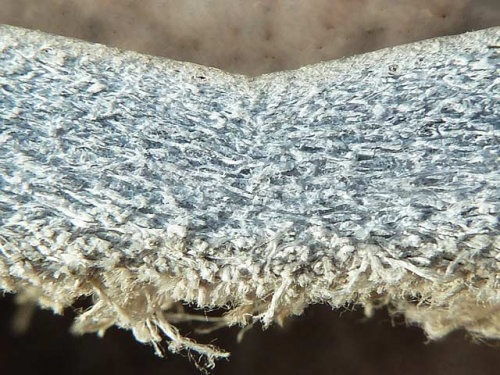
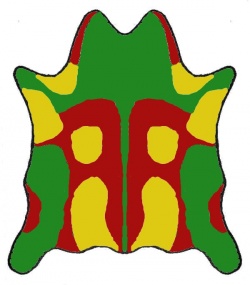
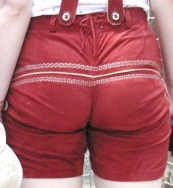
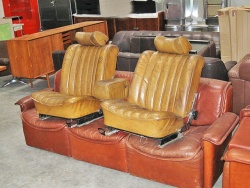
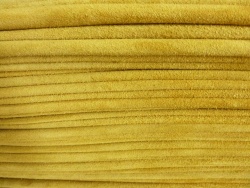
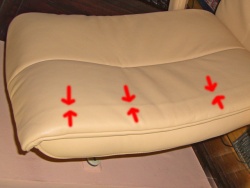
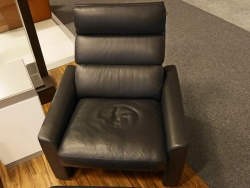
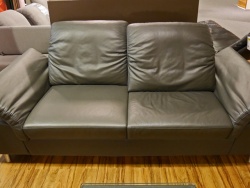
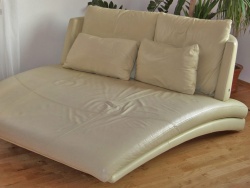
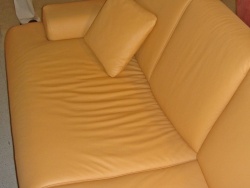
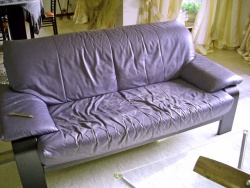
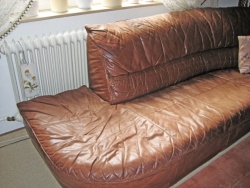
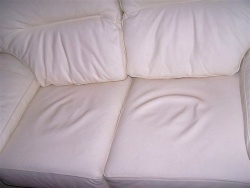
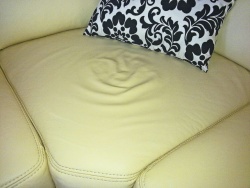
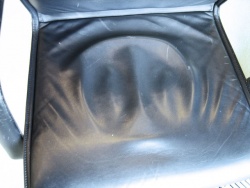
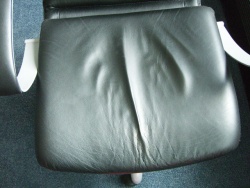
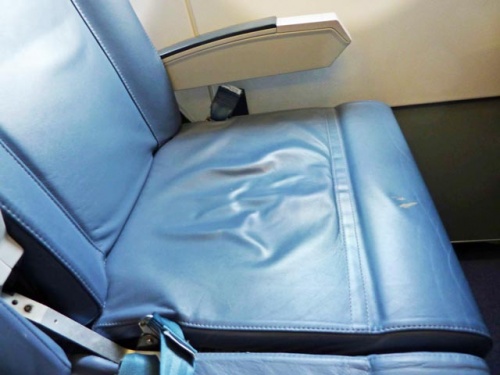
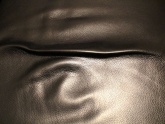
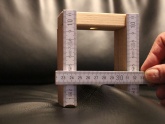
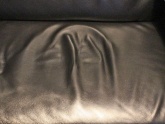
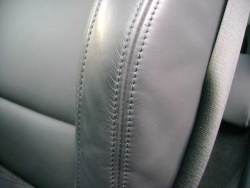
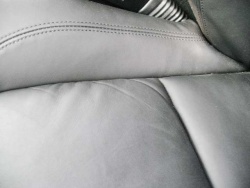
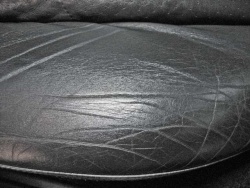
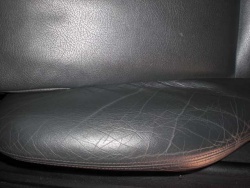
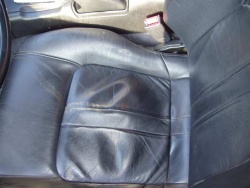
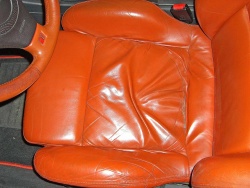
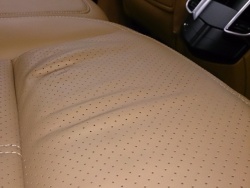
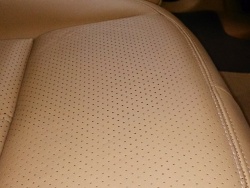
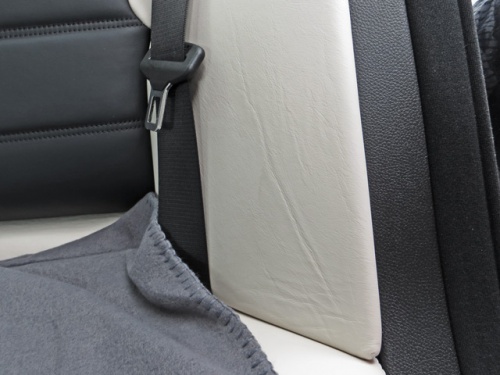
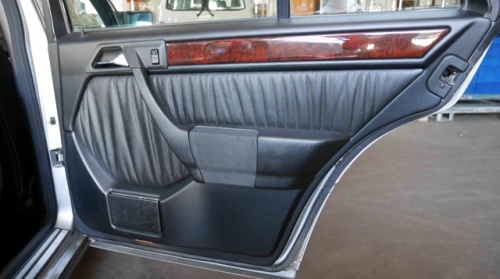
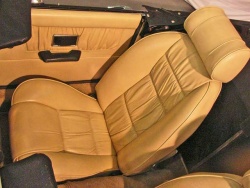
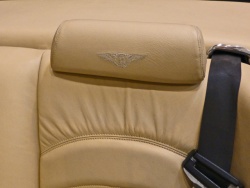
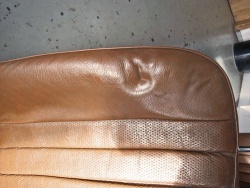
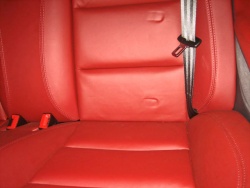
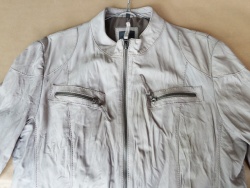
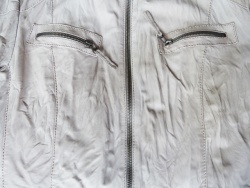

 a kotori web solution
a kotori web solution